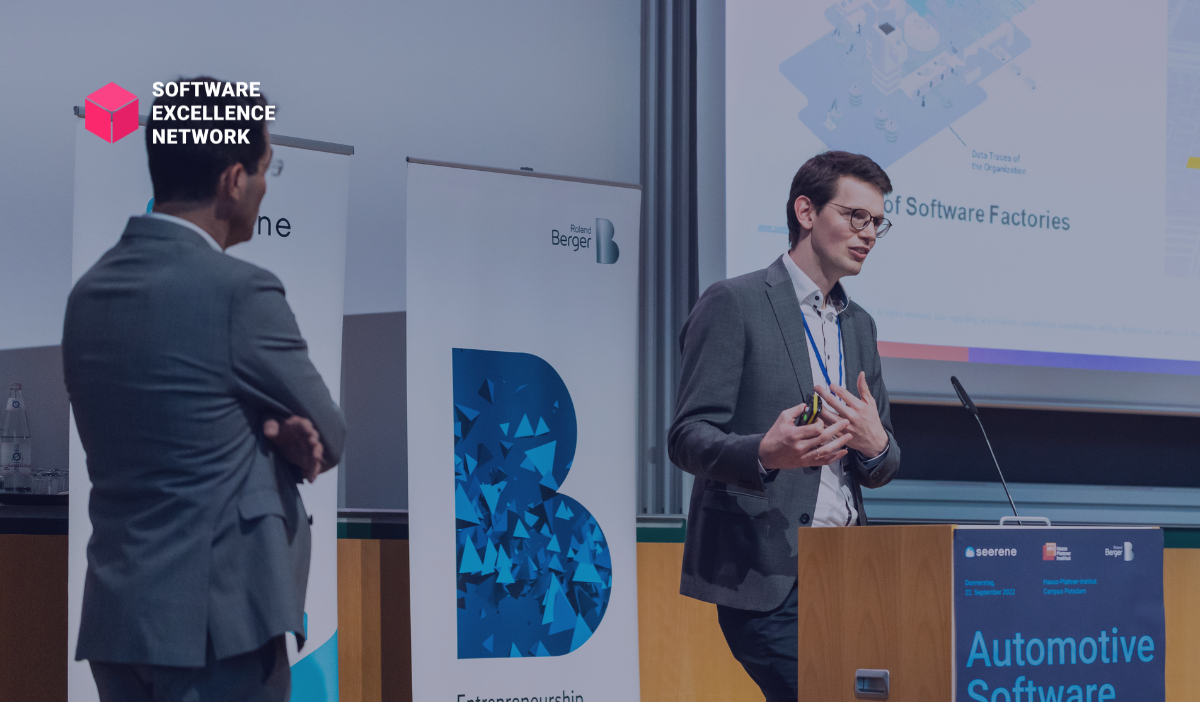
In the rapidly evolving landscape of the automotive industry, the shift from hardware-centric to software-defined development processes is more than a technological transition—it’s a profound organizational and cultural change. At the recent Learning Curves executive exchange, Dr. Matthias Burger and Felix Meyer zu Driehausen shared their experiences and strategies gleaned from their tenure at Bosch. Their insights illuminate a path for automotive organizations navigating this transformation.

Traditionally, the automotive sector has tightly coupled software and hardware development. Software was often finalized and flashed onto hardware at the start of production (SOP), creating rigid processes and organizational structures tailored to this paradigm. However, with the rise of software-defined vehicles (SDVs), this approach no longer suffices. Continuous software deployment and updates throughout a vehicle’s lifecycle are now imperative.
Burger and Meyer zu Driehausen highlighted the complexities introduced by this shift, particularly in managing variants. While traditional methods focused on maximizing reuse through isolated integration platforms and shared software components, these processes often resulted in "patches"—divergences that fragmented codebases and complicated integration. The need to decouple software from hardware has led to a reimagining of assumptions, architectures, and organizational structures.
The speakers emphasized the importance of value stream analysis, a method borrowed from hardware production, to identify inefficiencies in software development. By visualizing the flow of work, organizations can pinpoint non-value-adding activities (e.g., manual integrations, redundant tests) and streamline processes.
Their analysis revealed significant inefficiencies stemming from divergent codebases and hardware dependencies, which slowed integration and deployment. To counter these challenges, they proposed three key strategies:
Architectural Alignment
A unified software architecture capable of handling variants with stable interfaces is essential. Unlike Tesla, which minimizes variation, many automotive manufacturers deal with diverse sensor setups and configurations. To manage this complexity, organizations must establish a common architecture that eliminates patches and ensures consistency.
Process Transformation
Legacy processes rooted in hardware development often hinder software production. By adopting modern software development practices such as automated testing and continuous integration, organizations can reduce lead times and improve quality. Key processes, including release management and quality gates, must be adapted to the iterative nature of software delivery.
Organizational Evolution
Conway’s Law, which states that organizations design systems that mirror their communication structures, underscores the need for integrated teams. Vertical silos—separating components, platforms, and customer solutions—lead to fragmented codebases. Instead, cross-functional teams aligned with architectural components can foster collaboration and maintain a common codebase.
Metrics play a pivotal role in steering software development. Burger and Meyer zu Driehausen introduced a multi-level KPI framework that connects technical metrics with business outcomes:
These KPIs not only guide decision-making but also ensure alignment between engineering efforts and organizational goals.
One of the challenges in software development is achieving visibility into the codebase and its dependencies. Tools like Seerene provide actionable insights by visualizing code changes, identifying potential issues (e.g., patches), and enabling root cause analysis. This holistic overview allows leaders to address problems proactively, fostering continuous improvement across the value stream.
Burger and Meyer zu Driehausen stressed that success lies in blending proven practices from hardware production with innovative software strategies. While it’s tempting to overhaul everything, incremental change that leverages existing strengths is more effective. By connecting software KPIs to business value and fostering a culture of inspection and adaptation, organizations can achieve sustainable growth.
The transition to software-defined vehicles is a monumental shift for the automotive industry. As Dr. Matthias Burger and Felix Meyer zu Driehausen demonstrated, it requires not only technical innovation but also organizational transformation. By aligning architecture, processes, and teams with the principles of continuous delivery and leveraging tools like Seerene for visibility, automotive companies can navigate this change and emerge as leaders in the era of SDVs.
The Software Excellence Network is a premier community for leaders and innovators dedicated to advancing software development practices. By fostering collaboration, sharing insights, and showcasing cutting-edge tools, the network empowers organizations to achieve strategic breakthroughs in software excellence and efficiency. This masterclass and the Learning Curves executive exchange were organized as part of the Software Excellence Network initiative.
A Note to Our Readers:
This article offers an overview of the key ideas presented by Dr. Matthias Burger and Felix Meyer zu Driehausen during their masterclass. While we’ve captured the main concepts and innovations they shared, the full scope of their insights and examples is best experienced by watching the entire session. To dive deeper and hear directly from the speakers, we invite you to view the complete presentation. For any questions or further information, feel free to contact us.
These Stories on Events/Webinars
August-Bebel-Str. 26-53
14482 Potsdam, Germany
hello@seerene.com
+49 (0) 331 706 234 0
Generative AI Seerene GmbH
August-Bebel-Str. 26-53
14482 Potsdam, Germany
hello@seerene.com
+49 331 7062340